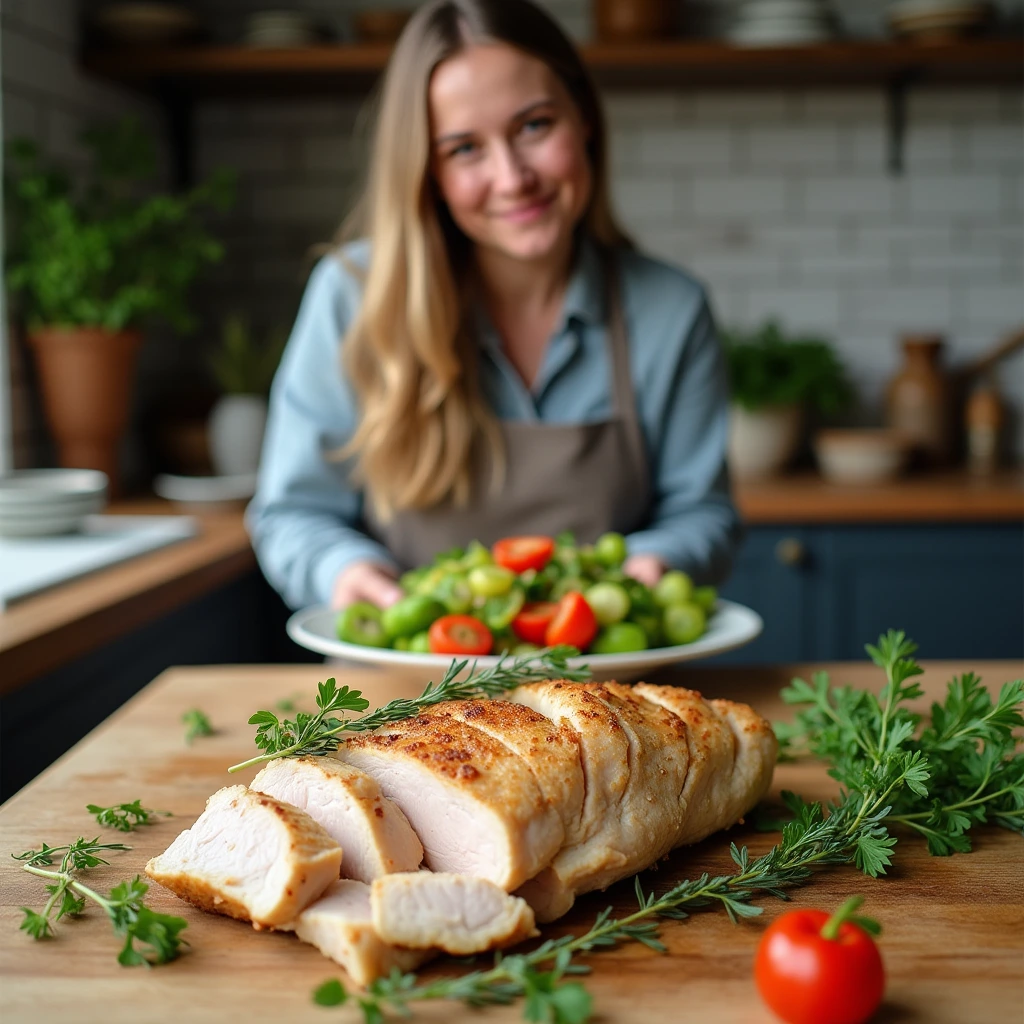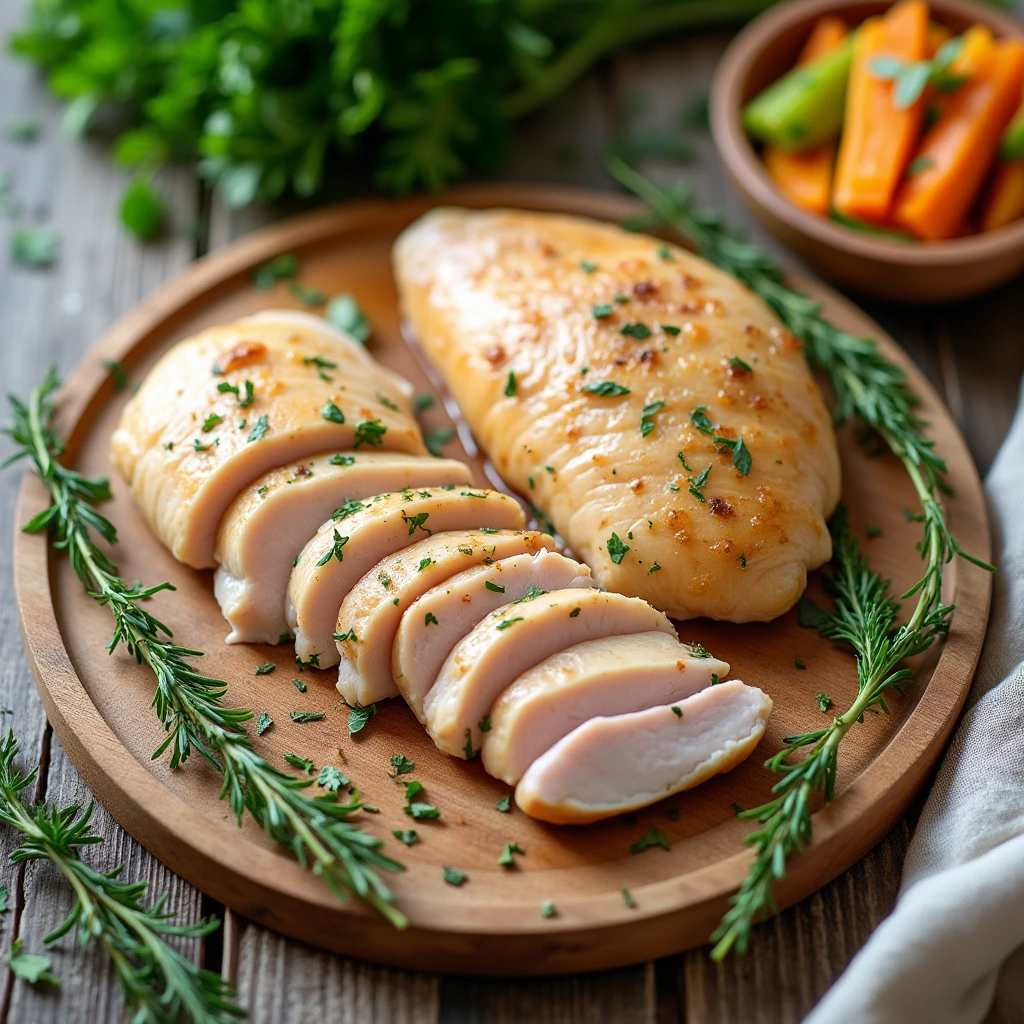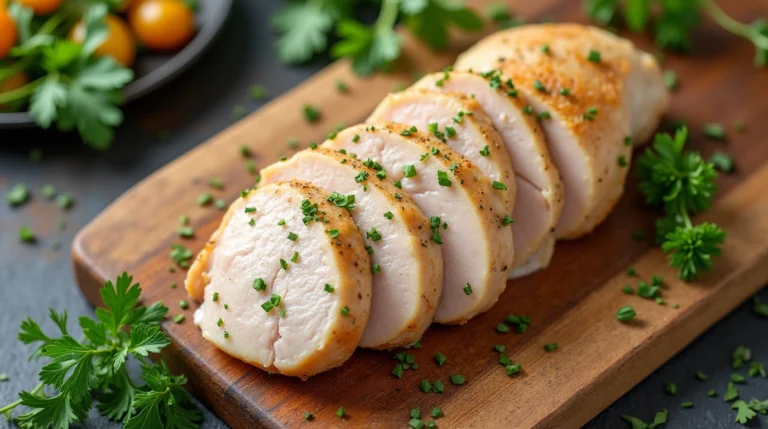Can You Boil Chicken Breast? The Ultimate Guide to a Simple, Healthy Meal
When you’re looking for a quick, nutritious, and versatile way to prepare chicken, boiling chicken breast is one of your best options. Whether you’re meal prepping, making a cozy chicken soup, or simply looking for a healthy protein source to add to your dishes, boiling chicken breast provides a quick and convenient solution. In this comprehensive guide, you’ll learn everything you need to know about boiling chicken breast: from the benefits and step-by-step cooking process to tips, tricks, and mistakes to avoid.
Introduction: The Magic of Boiled Chicken Breast
We’ve all had those days when cooking feels like a chore, and we want something simple yet satisfying. Boiling chicken breast might not sound as exciting as grilling or roasting, but trust me, it’s a technique that gives you juicy, tender chicken every time. It’s perfect for meal prep, and the chicken can be used in a variety of dishes like salads, wraps, and soups. If you’ve ever wondered, “Can you boil chicken breast?” or if you’re just looking for a healthier, easier way to prepare chicken, this guide is for you.
Boiling chicken breast is not just about getting the chicken cooked it’s about preserving its natural flavor and moisture, keeping the meat lean, and using it in so many versatile ways. With a few simple steps, you’ll soon discover how to make boiled chicken breast your go-to for easy and delicious meals.


What Is Boiling Chicken Breast?
Definition of Boiling
When we talk about boiling chicken breast, we’re referring to cooking the chicken in water or broth that is heated to a boiling point. Unlike grilling or frying, which use direct heat, boiling involves cooking the chicken by immersing it in a hot liquid. The boiling liquid helps retain the chicken’s moisture and infuses the meat with subtle flavors if you choose to add seasonings, herbs, or broth.
Boiling chicken breast is a gentle and effective way to cook the meat without over-drying it. The water or broth essentially steams the chicken from the outside, locking in the juices for a tender result. While boiling may sound simple, it’s the consistency of the process that leads to such a satisfying texture and flavor.
Why Boil Chicken Breast?
So why should you choose to boil your chicken breast? Well, there are plenty of reasons that make boiling chicken a go-to method for so many home cooks:
- Healthier Option: Since there’s no added fat or oil required to cook the chicken, boiling is one of the healthiest ways to prepare this lean meat. It retains all the natural flavors and moisture while keeping it light.
- Moisture Retention: Boiling helps preserve the chicken’s natural juices, ensuring you don’t end up with dry, tough meat, which can sometimes happen with other cooking methods.
- Versatile Cooking: Once boiled, the chicken breast can be used in a variety of dishes. You can chop it, shred it, or serve it whole, making it perfect for meal prepping or adding to soups, salads, casseroles, and even sandwiches.
How to Boil Chicken Breast: Step-by-Step Guide
Preparing the Chicken
Before you even start boiling your chicken, you want to make sure it’s properly prepared to ensure the best results:
- Trim the Fat: Although chicken breasts are naturally lean, you may still find some fatty pieces along the edges. Trim any visible fat to make the chicken healthier and cleaner.
- Seasoning: While boiling may seem bland, it doesn’t have to be! Lightly season the chicken breasts with salt, pepper, and any spices you prefer. If you’re looking to add some extra flavor, you can sprinkle garlic powder, paprika, or Italian seasoning. You can even rub a small amount of olive oil for some added richness if you like.
- Marinating: If you have time, marinate your chicken breast for 30 minutes to an hour before boiling. A simple marinade with lemon juice, olive oil, and herbs can infuse extra flavor into the meat, making it even tastier.
Boiling Process
Now, let’s get into the step-by-step process of boiling chicken breast:
- Fill the Pot: Start by filling a pot with enough water to fully submerge the chicken breasts. You can also use chicken broth for added flavor.
- Bring the Water to a Boil: Place the pot over high heat and bring the water or broth to a rolling boil.
- Add the Chicken: Once the water is boiling, carefully add the chicken breasts. Be cautious as the water might splash.
- Reduce the Heat: After adding the chicken, reduce the heat to medium-low to maintain a simmer. The water should bubble gently, not boil violently.
Timing and Temperature
Getting the cooking time right is key to ensuring that your chicken breast comes out perfectly tender and juicy:
- Boneless, Skinless Chicken Breast: For boneless, skinless chicken breasts, you’ll need to cook them for about 12-15 minutes. The timing may vary slightly based on the thickness of the meat.
- Bone-In Chicken Breast: If you’re cooking bone-in chicken breasts, the cooking time will be longer about 20-30 minutes since the bone affects the cooking process.
Signs That Your Chicken Is Done
While time is a good indicator, there are a few other signs that tell you when your chicken breast is ready:
- Color: The chicken should be opaque all the way through. If there are any pink areas, it needs more time.
- Internal Temperature: The USDA recommends cooking chicken to an internal temperature of 165°F (75°C). Use a meat thermometer to be sure.
- Juices Run Clear: When you cut into the chicken, the juices should run clear, not pink. This is another indication that the chicken is fully cooked.
Table: Ingredients for Boiled Chicken Breast
| Ingredient | Amount | Notes |
|---|---|---|
| Chicken Breasts | 2 boneless, skinless | Fresh or frozen (thaw before boiling) |
| Water or Chicken Broth | 4-5 cups | Adjust based on pot size |
| Salt | 1-2 tsp | Adjust to taste |
| Pepper | 1 tsp | Optional |
| Garlic Cloves | 2-3 cloves (whole) | Optional |
| Onion | 1 small (quartered) | Optional |
| Bay Leaves | 2 leaves | Optional |
| Fresh Herbs (Thyme) | 2-3 sprigs | Optional |
This simple yet effective ingredient list will give you flavorful, moist chicken. Feel free to adjust the seasoning or use different herbs based on your preferences!
Benefits of Boiling Chicken Breast
Health Benefits
Boiled chicken breast is incredibly healthy for several reasons:
- Low in Fat: Since no oil is required, boiled chicken is a low-fat option, perfect for anyone on a low-fat or calorie-controlled diet.
- High in Protein: Chicken breast is an excellent source of lean protein, which is crucial for building and repairing tissues, including muscle.
- Hydrating: Boiling chicken in water or broth helps retain moisture, preventing the chicken from drying out. The result is tender, juicy chicken that’s more enjoyable to eat.
Convenience and Versatility
Boiled chicken is incredibly convenient and flexible:
- Quick: Boiling chicken is relatively fast compared to grilling or roasting, especially for boneless chicken breasts.
- Meal Prep Friendly: You can easily boil multiple chicken breasts at once, making it perfect for meal prepping. Once boiled, the chicken can be stored in the fridge for several days or frozen for later use.
- Multiple Uses: Once you’ve boiled your chicken, you can use it in a variety of recipes. From chicken soups to chicken salads, sandwiches, and wraps, the options are endless.
Low in Fat and High in Protein
Because chicken breast is lean and packed with protein, it’s the perfect choice for anyone looking to add muscle or maintain a healthy diet. The absence of added fat in the boiling process makes it even healthier compared to other cooking methods that involve oils or butter.
Boiling Chicken Breast for Different Dishes
Boiled Chicken Breast for Meal Prep
Meal prepping has become a go-to solution for busy individuals looking to eat healthy without spending too much time in the kitchen. Boiling chicken breast is ideal for this:
- Prepare in Bulk: Boil several chicken breasts at once, then store them in airtight containers in the fridge for up to 4 days. This makes for quick lunches and dinners throughout the week.
- Shred for Versatility: After boiling, shred the chicken into pieces. This allows you to easily use it in various dishes such as wraps, bowls, or sandwiches.
Using Boiled Chicken in Soups and Salads
Boiled chicken is a fantastic addition to both soups and salads:
- Chicken Soup: Boiled chicken can be added to any type of soup, from a classic chicken noodle to creamy chicken and vegetable soups. It adds a rich flavor and protein to your meal.
- Chicken Salad: Shredded boiled chicken makes for a perfect base in a chicken salad. Combine it with leafy greens, fresh vegetables, and your favorite dressing for a light yet filling meal.
Incorporating Boiled Chicken in Sauces and Casseroles
You can also use boiled chicken in sauces and casseroles:
- Chicken Alfredo: Add boiled chicken to creamy pasta dishes like chicken Alfredo. The chicken soaks up the sauce’s flavor, making it extra delicious.
- Chicken Casseroles: Boiled chicken is great for casseroles, especially when combined with vegetables, cheese, and a creamy sauce. It saves you time and ensures your casserole has plenty of protein.
Tips and Tricks for Perfectly Boiled Chicken Breast
Adding Flavor to the Boiling Water
While chicken breast is naturally mild in flavor, there are several ways to boost its taste while boiling:
- Use Broth: Instead of water, use chicken broth for a more flavorful base.
- Add Herbs and Spices: Throw in bay leaves, peppercorns, garlic, onion, or thyme for extra flavor. These ingredients will infuse the chicken as it boils, making it more aromatic and savory.
How to Avoid Overcooking
Overcooking chicken can lead to dry, rubbery meat. Here are some tips to avoid it:
- Monitor the Time: Stick to the recommended cooking times, and check the chicken early to ensure it doesn’t overcook.
- Use a Thermometer: The most reliable way to prevent overcooking is by using a meat thermometer. Once the chicken reaches 165°F (75°C), it’s done.
Shredding and Storing Leftover Chicken
If you’ve boiled extra chicken, you can easily shred it for future meals:
- Shredding: Use two forks to shred the chicken once it’s cooled slightly. It’s great for salads, wraps, tacos, and more.
- Storage: Store leftover boiled chicken in an airtight container in the fridge for up to 4 days, or freeze it for later use.
Common Mistakes to Avoid When Boiling Chicken Breast
Overboiling the Chicken
It’s easy to overboil chicken, especially when you’re not watching the clock. This leads to dry, chewy meat. Always stick to the recommended cooking times.
Not Seasoning the Water
Don’t skip seasoning your chicken! Boiling in plain water can result in bland chicken. Add herbs, spices, and even a bit of salt to the water for enhanced flavor.
Using Low-Quality Chicken
Always use fresh, high-quality chicken. Chicken that’s been sitting around too long or has been frozen for too long can affect the taste and texture.
Frequently Asked Questions (FAQ)
Can You Boil Frozen Chicken Breast?
Yes, you can boil frozen chicken breast. However, it will take about 50% longer to cook. Always check the internal temperature to ensure it reaches 165°F (75°C).
How Long Do You Boil Chicken Breast for Tender Meat?
Boneless, skinless chicken breasts usually take 12-15 minutes to boil, while bone-in chicken breasts need about 20-30 minutes.
Can You Reuse the Water After Boiling Chicken?
Yes, you can reuse the water for soups or to make broth. It’s enriched with flavors from the chicken.
How Do You Boil Chicken Breast for a Chicken Salad?
Boil the chicken as you normally would, then shred it and add it to your salad. It pairs perfectly with leafy greens, veggies, and a light dressing.
What Can I Do with Leftover Chicken?
Leftover boiled chicken can be used in many dishes! Try using it in recipes like chicken tacos, chicken wraps, or even Chicken Alfredo Lasagna. You can get a delicious twist on the classic Chicken Alfredo with mushrooms by checking out this recipe: Mushroom Chicken Alfredo Lasagna – A Delicious Twist on Classic.
Conclusion
Boiling chicken breast is one of the easiest, healthiest, and most versatile cooking methods out there. Whether you’re looking to create a quick dinner or prep meals for the week ahead, boiling chicken gives you tender, juicy meat every time. By following the simple steps outlined in this guide, you’ll be able to make boiled chicken a regular part of your cooking routine. So, next time you’re wondering what to make for dinner, grab a chicken breast, add some water (or broth), and let it boil to perfection. Happy cooking!
